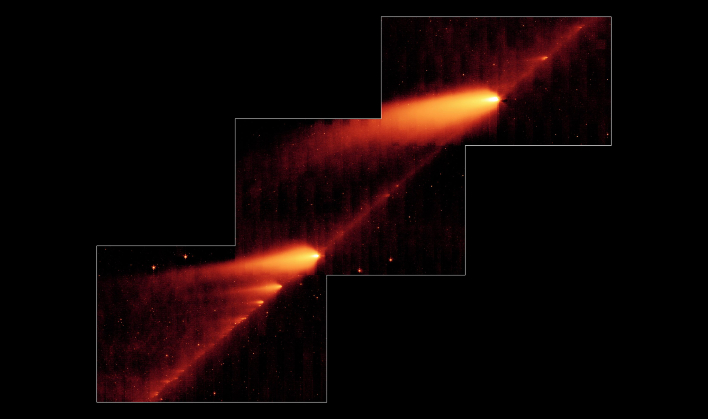Behold The Tau Heculids Meteor Shower Late In This Memorial Day Evening’s Night Sky

SW3 was first detected in 1930 by astronomers Arthur Wachmann and Carl Schwassmann as the comet moved through the constellation Hercules. The comet disappeared from view for about four decades, before reappearing once again in March of 1979. Then in 1995, astronomers discovered that SW3 had fractured into four parts. Since that time the comet has continued to fracture, with the Spitzer Space Telescope and Hubble Space Telescope showing it had more than 68 fragments in April of 2006.
Due to the fact SW3 has been continuing to break apart, astronomers and scientists have discussed the possibility of a new meteor shower being produced as the comet passes close to Earth. Experts around the world have suggested that as the fracturing comet passes Earth on May 30-31, sky-watchers could be privy to a show of shooting stars.
However, NASA wants sky-watchers to understand that while there could be an amazing show, there could also be nothing at all. In a recent blog by the space agency it stated, "So, we're encouraging eager sky-watchers to channel their inner scientists, and look beyond the headlines."
NASA points to the 2019 Alpha Monocerotid shower as an example. The media was abuzz with predictions of an outburst of the alpha Monocerotid meteor shower on the evening of November 21, 2019. Unfortunately, the night sky was void of the predicted meteor shower, and left many disappointed.
So, here are the facts that NASA is sharing in order for sky-watchers to temper their expectations:
- Earth will indeed pass through the debris trails of SW3 on the night of May 30th and into the early morning of May 31st.
- SW3 will not reach this point in its orbit until August.
- For there to be a viewable meteor shower, the fragments will need to have been ejected with speeds greater than twice the normal speeds. This speed is required for the fragments to reach Earth.
- The observations made by Spitzer in 2009 suggest that at least some of the fragments are moving fast enough. This is one reason astronomers are hopeful.
- It is predicted that if there is in fact a meteor shower, due to the tau Herculids slow movement, they will be faint.
The best time to look for the possible meteor shower will be around 1 a.m. May 31st on the East Coast of North America, or 10 p.m. May 30th on the West Coast.
Along with NASA, we at HotHardware want to make sure everyone is aware of the possibility of there not being anything to see. But we are all hopeful that there will indeed be a nice night sky show to close out the Memorial Day weekend.
Top Image Credit: Pexels/Neale LaSalle


